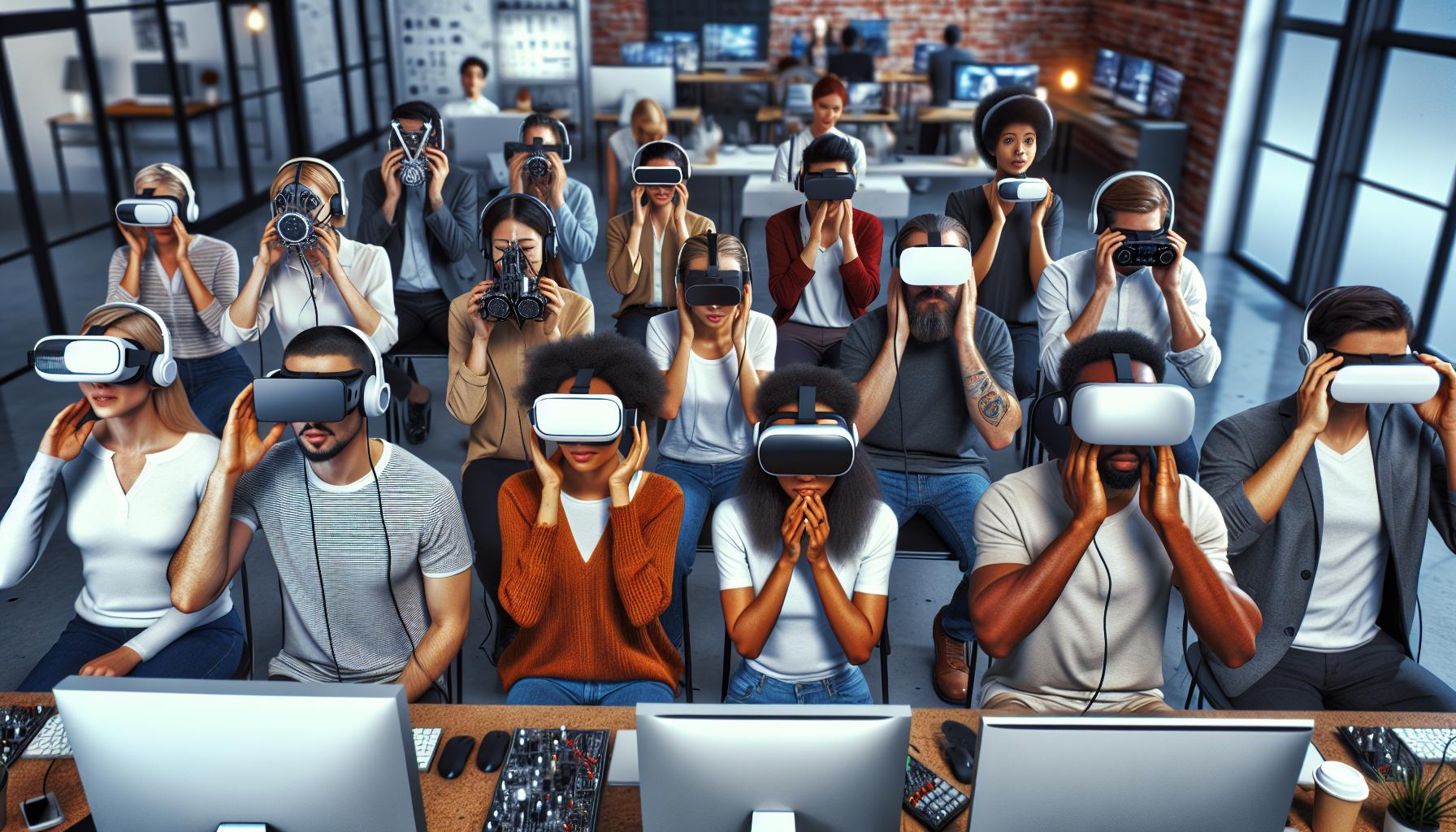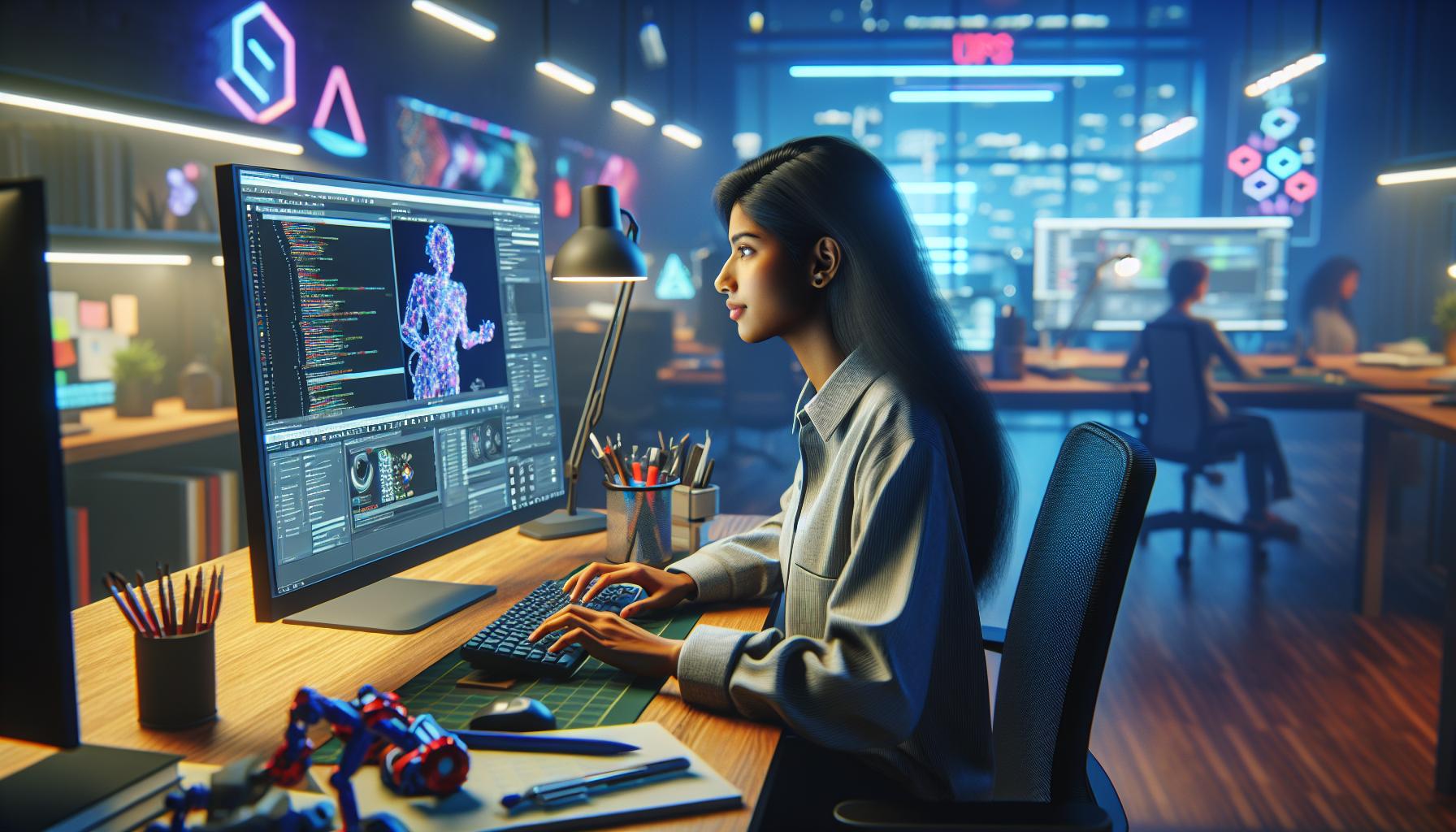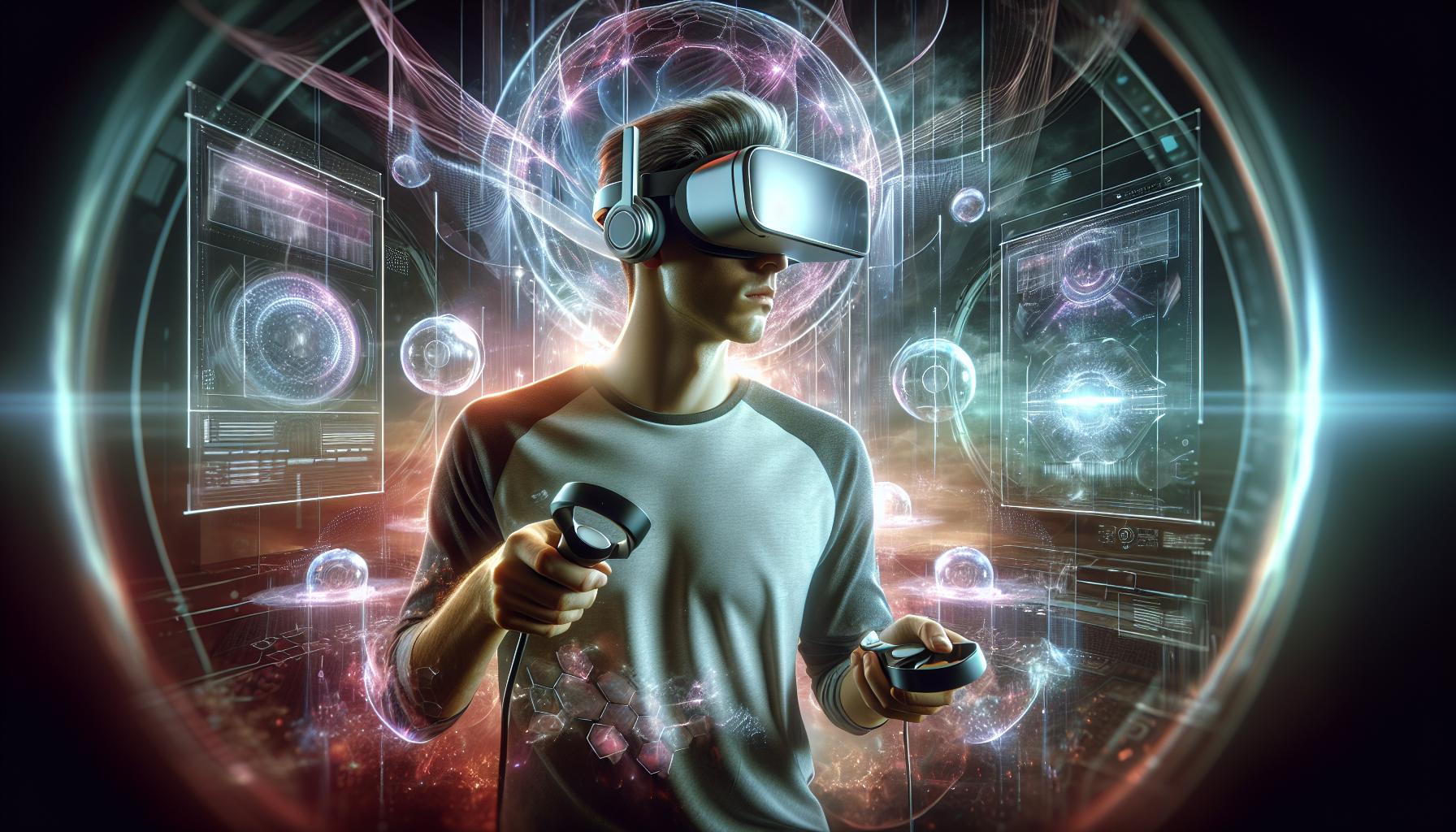Virtual reality isn’t just for tech giants and gaming companies anymore. With the right tools and knowledge anyone can create immersive VR experiences right from their computer. The journey from concept to virtual world might seem daunting but it’s more accessible than ever before.
Creating VR content has evolved from complex programming to user-friendly development platforms. Whether someone wants to design a virtual gallery showcase professional work or build an interactive gaming experience there’s a path for every aspiring VR creator. Modern tools like Unity 3D Unreal Engine and WebVR have democratized virtual reality development making it possible for creators to bring their wildest imaginations to life.
How to Make Virtual Reality
Virtual reality systems combine hardware and software elements to create immersive digital environments. These systems transform how users perceive and interact with computer-generated worlds through specialized equipment and precise tracking technologies.
Key Components of VR Systems
A VR system consists of four essential components that work together:
- Head-Mounted Displays (HMDs): Oculus Quest 2 Meta VR headsets deliver stereoscopic 3D visuals with high-resolution displays for each eye
- Motion Controllers: Touch controllers track hand movements enabling natural interaction with virtual objects
- Tracking Systems: External sensors or inside-out tracking cameras monitor user position with 6 degrees of freedom
- Processing Units: Dedicated graphics cards process complex 3D environments at 90+ frames per second
| Component Type | Typical Specifications |
|---|---|
| Display Resolution | 1832 x 1920 per eye |
| Refresh Rate | 90-120 Hz |
| Field of View | 90-110 degrees |
| Tracking Accuracy | Sub-millimeter |
Basic VR Terminology
Key VR terms include:
- Presence: The sensation of existing within a virtual space through sensory immersion
- Latency: Time delay between user movement and screen update measured in milliseconds
- Field of View (FOV): Visible area users see at any moment expressed in degrees
- Degrees of Freedom (DOF): Ways a user can move in VR space including rotation and position
- Interpolation: Technique for creating smooth motion between tracking points
- Rendering: Process of generating 3D images from computer models in real-time
Each term represents specific technical aspects of virtual reality systems that impact user experience quality. Understanding these concepts enables developers to create more effective VR applications.
Essential Hardware Requirements

Creating virtual reality experiences requires specific hardware components that work together to deliver immersive interactions. Each component serves a distinct purpose in the VR development process.
VR Headset Options
Modern VR headsets range from standalone devices to PC-connected models, each offering different capabilities for development. The Meta Quest 2 operates independently with 6DoF tracking at $299. Tethered options like the Valve Index provide higher fidelity graphics at $999 with 144Hz refresh rates. Development-focused headsets include the Varjo XR-3 at $5,495 with human-eye resolution displays. Budget developers often start with mobile VR headsets like Google Cardboard at $15 for basic testing.
Motion Controllers and Tracking Systems
Motion controllers translate physical movements into virtual interactions through integrated sensors and tracking technologies. Inside-out tracking systems use cameras on the headset to monitor controller positions. External tracking solutions like the SteamVR base stations offer sub-millimeter precision tracking at room scale. Haptic feedback mechanisms in controllers provide tactile responses with 1-2ms latency. Hand tracking capabilities eliminate the need for physical controllers in specific applications.
Computer Specifications
VR development demands robust computing power for smooth performance. The minimum requirements include:
| Component | Specification |
|---|---|
| CPU | Intel i5-9600K or AMD Ryzen 5 3600 |
| GPU | NVIDIA RTX 2060 or AMD RX 5700 |
| RAM | 16GB DDR4 |
| Storage | 256GB SSD |
| USB Ports | 1x USB 3.0 |
| Display Output | DisplayPort 1.2 |
Graphics cards need 8GB VRAM for optimal development performance. Processing power ensures consistent 90fps rendering for comfortable VR experiences.
Creating VR Content

Creating virtual reality content involves three core components: selecting development platforms, designing 3D assets, and programming interactive environments. Each component requires specific tools and techniques to produce immersive VR experiences.
Choosing Development Platforms
Unity and Unreal Engine dominate VR development with extensive VR-specific features and asset marketplaces. Unity offers C# programming with intuitive drag-drop interfaces, making it ideal for beginners and mobile VR applications. Unreal Engine provides advanced graphics capabilities through Blueprint visual scripting and C++ support, catering to high-end VR experiences. Alternative platforms include:
- Amazon Sumerian: Browser-based VR development with built-in hosting
- Mozilla Hubs: Open-source platform for social VR experiences
- A-Frame: Framework for creating WebVR content using HTML
- Godot Engine: Free, open-source engine with growing VR support
3D Modeling and Asset Creation
3D modeling software forms the foundation of VR asset creation. Blender offers comprehensive 3D modeling features with VR-specific export options. Maya excels in character animation while 3ds Max specializes in architectural visualization. Essential asset creation tools include:
- Substance Painter: Texturing software for realistic material creation
- ZBrush: Digital sculpting for detailed character models
- Mixamo: Auto-rigging service for character animations
- Photogrammetry software: Reality capture for real-world object scanning
- Sound design tools: Audio creation for spatial sound implementation
- Locomotion systems: Teleportation smooth movement options
- Hand presence: Controller mapping gesture recognition
- Physics interactions: Object manipulation gravity simulation
- Spatial audio: 3D sound positioning atmosphere creation
- Performance optimization: LOD systems frame rate management
Implementing VR Interactions

VR interactions form the foundation of user engagement in virtual environments. Creating intuitive interactions requires careful consideration of user interface elements, movement systems, and spatial audio integration.
User Interface Design
VR interfaces follow spatial design principles distinct from traditional 2D layouts. Designers place UI elements at arm’s length (1.5-2 meters) within the user’s natural field of view (90-110 degrees). Critical interface components include:
- Radial menus for quick item selection
- Floating panels for detailed information display
- Laser pointers for precise object targeting
- Gesture-based controls for natural manipulation
- Spatial indicators for navigation cues
Text elements maintain a minimum size of 40 pixels for readability, while interactive buttons span at least 0.05 meters for comfortable selection.
Motion Controls and Navigation
Motion control systems translate physical movements into virtual actions through tracked controllers or hand gestures. Common navigation methods include:
- Teleportation with arc-based targeting
- Smooth locomotion using joystick input
- Grab-and-pull climbing mechanics
- Room-scale walking within defined boundaries
- Snap turning at 30-degree increments
Comfort settings offer options for seated play, standing experiences, or room-scale movement with customizable boundaries ranging from 2×2 meters to 5×5 meters.
Audio Integration
Spatial audio creates immersive soundscapes that react to user position and head movement. Key audio components include:
- HRTF-based 3D sound positioning
- Distance-based volume attenuation
- Room acoustics simulation
- Object-based audio triggers
- Ambient sound layers
Audio sources maintain proper positioning within a 20-meter radius, while reverb zones adapt to virtual room dimensions. Doppler effects apply to moving sound sources at speeds above 5 meters per second.
Testing and Optimization
Testing and optimization transform a basic VR experience into a polished, professional product. These processes identify performance bottlenecks, enhance user comfort and eliminate technical issues that impact immersion.
Performance Benchmarking
Performance benchmarking measures VR applications against industry standards through specific metrics. Frame rate monitoring tracks consistent delivery of 90 frames per second, the minimum requirement for comfortable VR experiences. GPU profiling tools identify rendering bottlenecks by analyzing draw calls, polygon counts and texture memory usage. CPU performance analysis examines physics calculations, AI operations and asset loading times. Tools like Unity Profiler or Unreal Insights generate detailed reports on:
| Metric | Target Value |
|---|---|
| Frame Rate | 90+ FPS |
| Motion-to-Photon Latency | <20ms |
| Draw Calls | <1000 per frame |
| Triangle Count | <1.5M per frame |
| CPU Usage | <75% |
User Experience Testing
User experience testing evaluates comfort, intuition and engagement through systematic observation. Test participants complete specific tasks while observers record completion times, error rates and physical responses. Heat mapping tracks user gaze patterns to optimize interface placement and content layout. Feedback collection focuses on:
- Motion sickness symptoms
- Control scheme effectiveness
- Object interaction accuracy
- Navigation comprehension
- Visual clarity at different distances
- Audio positioning accuracy
- Physical comfort during extended use
Bug Fixing and Refinement
Bug fixing involves systematic identification and resolution of technical issues through structured testing protocols. Automated testing tools scan for common VR-specific issues like:
- Tracking inconsistencies
- Controller input delays
- Collision detection errors
- Asset loading failures
- Frame rate drops
- Audio synchronization problems
Version control systems track changes through iterative debugging cycles. Bug reporting tools document issues with reproduction steps, system specifications and error logs for efficient resolution tracking.
Virtual Reality Fundamentals
Creating virtual reality experiences has evolved from a complex technical endeavor to an accessible creative pursuit. Today’s developers have access to powerful tools platforms and resources that streamline the VR development process.
Success in VR creation comes down to understanding the core components mastering development platforms and prioritizing user experience. With dedication to learning the fundamentals proper testing and continuous optimization anyone can bring their virtual worlds to life.
The future of VR development looks promising as tools become more sophisticated and accessible. Whether you’re an indie developer or part of a larger team there’s never been a better time to start creating immersive virtual experiences.



